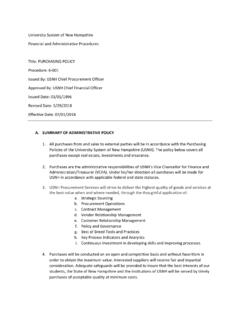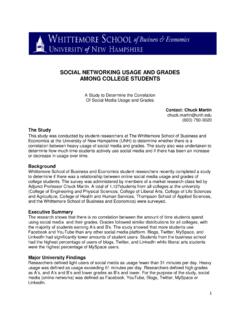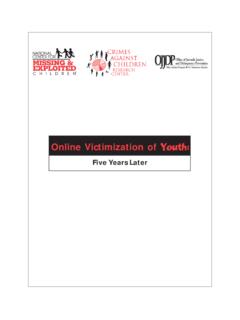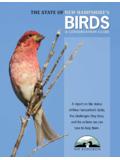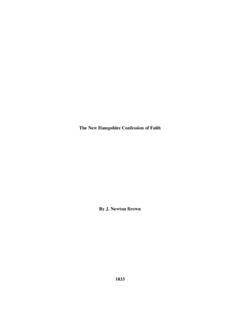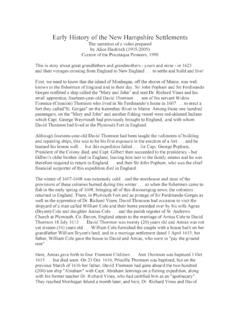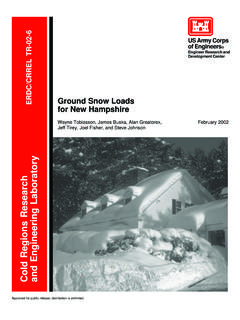Transcription of Defining Child Pornography: Law Enforcement …
1 CV96. Police Practice and Research, Vol. 8, No. 3, July 2007, pp. 269 282. Downloaded By: [Thirkers, Queen] At: 12:43 25 July 2007. Defining Child pornography : Law Enforcement Dilemmas in Investigations of Internet Child pornography Possession1. Melissa Wells, David Finkelhor, Janis Wolak & Kimberly J. Mitchell 830 Taylor Dr 00000 July MelissaWells Police & Francis 2007. 1561-4263. Original 2007 Practice and Article (print)/1477-271X. Francis and Ltd Research (online). This study examines law Enforcement dilemmas in Child pornography possession investiga- tions in which no offender was arrested. A mail survey of US law Enforcement agencies identified a sample of Internet Child pornography possession cases where no arrest was made.
2 Telephone surveys with law Enforcement investigators were used to collect case- specific data and information on dilemmas in these investigations. Law Enforcement inves- tigators reported that determining whether or not images fit within statutory limits and ascertaining the age of children in images impacted arrest outcomes in Child pornography possession cases. Melissa Wells, PhD, LICSW, is an Assistant Professor of Social Work at the University of New Hampshire. She received her PhD in Sociology at the University of New Hampshire and her Master in Social Work from the University of Minnesota Duluth. Her research interests include Child protection and law Enforcement collabora- tion, Internet sex crimes against minors, Child welfare, service learning, and program evaluation.
3 David Finkelhor, PhD, is Director of the Crimes Against Children Research Center and also Co-Director of the Family Research Laboratory and Professor of Sociology at the University of New Hampshire. Dr Finkelhor has a PhD in Sociology from the University of New Hampshire. Janis Wolak, JD, is a Research Assistant Professor at the Crimes Against Children Research Center of the University of New Hampshire. She has a law degree from Southwestern University School of Law and a MA in Sociology from the University of New Hampshire. She is the author and co-author of numerous articles about Child victimization, Internet-related sex crimes, and youth Internet use and a principal investigator for the First and Second Youth Internet Safety Surveys, the National Juvenile Online Victimization Study (N-JOV), and the National Juvenile Prostitution Study.
4 Kimberly Mitchell, PhD, is a Research Assistant Professor of Psychology at the Crimes Against Children Research Center located at the University of New Hamp- shire. She received her PhD in Experimental Psychology from the University of Rhode Island in January 1999 with concentrations in quantitative methods, women's health, and family violence. Dr Mitchell's research interests include youth Internet victimization, juvenile prostitution, and missing children. Correspondence to: Melissa Wells, PhD, LICSW, Department of Social Work, 239 Pettee Hall, University of New Hampshire, Durham, NH. 03824, USA. Tel: +1 603 862 0076; Email: ISSN 1561 4263 print/ISSN 1477 271X online 2007 Taylor & Francis DOI: 270 M.
5 Wells et al. Keywords: Internet Crime; Child pornography ; Child Victimization; Law Enforcement ;. Police; Sex Crime Downloaded By: [Thirkers, Queen] At: 12:43 25 July 2007. Introduction Although Child sex crimes have been a recognized social problem for more than two decades (Finkelhor, 1984), recent policy and media attention has focused on the commission of these crimes via the Internet. The emergence of Internet-facilitated sex crimes, including Internet Child pornography possession, has raised crucial questions regarding the use of the Internet by offenders and the law Enforcement challenges in addressing these offenses. The problem of Child pornography possession was thought to have been mini- mized prior to the emergence of the Internet.
6 The availability of Child pornography had declined due to legal actions and statutory revisions (Jenkins, 2001). However, there is a general consensus that the Internet has made Child pornography more accessible and available to collectors and distributors (Biegel, 2001; Jenkins, 2001;. Wolak, Mitchell, & Wells, 2002). Electronic Child pornography can be obtained and traded on the World Wide Web, using Internet Relay Chat and via other online sources (Taylor, Quayle, & Holland, 2001). Online, Child pornography possessors can download Child pornography for collections and distribute images to other consumers. Internet Child pornography possession cases involve the use of the Internet or computer technology to possess and/or collect electronic images of Child pornogra- phy.
7 These investigations present challenges for law Enforcement agents in the USA. and around the world. This study explores law Enforcement dilemmas related to Defining Child pornography in a sample of 34 Internet Child pornography posses- sion cases in which no offender was arrested. This study identifies specific dilemmas emerging in these investigations and presents recommendations related to these incidents. Issues in Internet Child pornography This analysis examined law Enforcement dilemmas related to Defining Child pornogra- phy in Internet crimes. Law Enforcement agencies investigate these cases using tradi- tional and undercover techniques and may encounter specific dilemmas related to the nature of these incidents.
8 Additionally, there is considerable statutory variation among state and national definitions of Child pornography and there can also be challenges related to establishing with certainty the ages of young people depicted in images. These issues can create obstacles for law Enforcement . What is Internet Child pornography ? Within the USA, there is currently no uniform definition of Child pornography , and therefore, significant variation exists among state statues. US federal law defines a Police Practice and Research: An International Journal 271. youth under the age of 18 as a Child ' and includes in its definition of Child pornography photographs and films of conduct that are sexually explicit (Klain, Davies, & Hicks, 2001).
9 Sexually explicit conduct may include sexual intercourse, bestiality, masturba- Downloaded By: [Thirkers, Queen] At: 12:43 25 July 2007. tion, and lascivious exhibition of the genitals or pubic area.' These federal definitions have been adopted by some states and interpreted broadly, such that it is difficult to identify one specific definition for Child pornography . Child pornography possessors may use Child pornography to validate their sexual interest in children, to groom children and lower their inhibitions, or to blackmail victims or other offenders (Klain et al., 2001; Tyler & Stone, 1983). Others may be motivated to collect Child pornography out of curiosity, for sexual arousal, or for other reasons.
10 As noted, this study examines law Enforcement dilemmas in alleged Internet Child pornography possession and does not include cases of Child pornography production. Therefore, the cases classified here as Internet Child pornography possession did not involve any online correspondence, exchange of images, or other Internet connection between an adult suspect and an identified juvenile victim. Law Enforcement agents in this sample did not identify or contact any of the youth depicted in the Child pornography images. Law Enforcement Investigations of Internet Child pornography In the USA, law Enforcement agencies arrested an estimated 1,713 offenders for Internet-related crimes that involved the possession of Child pornography during the 12 months starting July 1, 2000 (Wolak, Mitchell, & Finkelhor, 2003).


